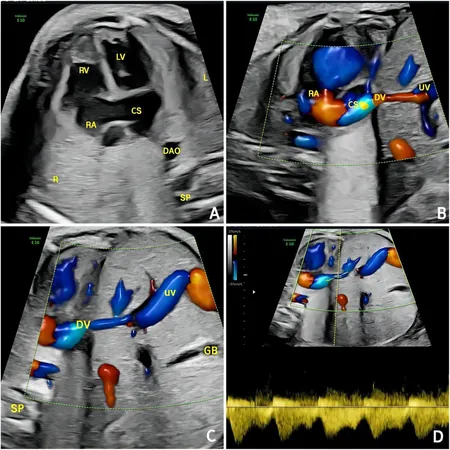
Breaking Ground in Fetal Diagnosis: A New Look at Rare Heart Anomalies
2025-04-12
Author: John Tan
A Major Leap in Prenatal Ultrasound Diagnosis
In an exciting breakthrough for fetal health, researchers have made significant strides in diagnosing a rare but critical anomaly known as anomalous drainage of the ductus venosus (DV) into the coronary sinus (CS). This condition, which poses unique challenges for prenatal care, has recently been more accurately diagnosed through the latest advancements in ultrasound technology.
What Is Anomalous Drainage of the Ductus Venosus?
Anomalous drainage refers to an unusual pathway that the ductus venosus takes, leading directly to the coronary sinus instead of following its normal route. This condition can complicate fetal development and is crucial for prenatal diagnosis to ensure timely and effective management.
Innovative Imaging Techniques Make a Difference
Researchers at Gansu Provincial Maternal and Child Health Hospital analyzed the cases of eight fetuses diagnosed between September 2019 and September 2024. Using advanced imaging techniques, including two-dimensional (2D) and the cutting-edge three-dimensional (3D) spatiotemporal image correlation (STIC) technology, medical professionals have gained clearer insights into this condition.
Successful Outcomes and Key Findings
Among the eight fetuses studied, five presented isolated anomalies, while three were linked to other malformations like an aberrant right subclavian artery. Notably, every case exhibited a dilated coronary sinus, averaging a diameter of 5.7 mm. The advanced imaging allowed healthcare providers to not only visualize the anomaly but also to enhance diagnostic confidence, ultimately leading to favorable neonatal outcomes post-birth.
Essential Follow-Up for Pediatric Patients
While the majority of the neonates showed promising health indicators, including normal growth and development, some cases experienced persistent CS dilation. Thankfully, these conditions did not translate into significant health risks or clinical symptoms. However, ongoing observation remains vital to ensure these infants continue to thrive.
Why Early Detection Is Crucial
Accurate prenatal diagnosis of this unusual anomaly allows for better management strategies and informed decision-making regarding delivery and postnatal care. The timely use of 3D ultrasound significantly enhances the ability to identify potential complications, offering a solid foundation for the health of both the mother and child.
The Future of Fetal Health Diagnosis
As the integration of STIC technology into prenatal imaging becomes more widespread, healthcare providers can expect to further refine their diagnostic capabilities. This approach promises to reshape our understanding of fetal vascular anomalies and improve outcomes for affected families. Experts stress the importance of comprehensive training for practitioners in recognizing these anomalies, ensuring that no case goes undiagnosed.
Conclusion: A Bright Spot in Fetal Medicine
The development in diagnosing anomalous drainage of the ductus venosus into the coronary sinus marks a significant advancement in fetal medicine. Through innovative imaging techniques, healthcare providers are now better equipped to identify and manage this rare condition, ultimately paving the way for healthier outcomes for newborns. As we move forward, continued research and enhanced ultrasound training remain essential for addressing the complexities of fetal health.


 Brasil (PT)
Brasil (PT)
 Canada (EN)
Canada (EN)
 Chile (ES)
Chile (ES)
 Česko (CS)
Česko (CS)
 대한민국 (KO)
대한민국 (KO)
 España (ES)
España (ES)
 France (FR)
France (FR)
 Hong Kong (EN)
Hong Kong (EN)
 Italia (IT)
Italia (IT)
 日本 (JA)
日本 (JA)
 Magyarország (HU)
Magyarország (HU)
 Norge (NO)
Norge (NO)
 Polska (PL)
Polska (PL)
 Schweiz (DE)
Schweiz (DE)
 Singapore (EN)
Singapore (EN)
 Sverige (SV)
Sverige (SV)
 Suomi (FI)
Suomi (FI)
 Türkiye (TR)
Türkiye (TR)
 الإمارات العربية المتحدة (AR)
الإمارات العربية المتحدة (AR)